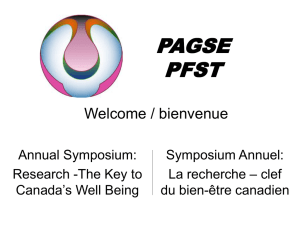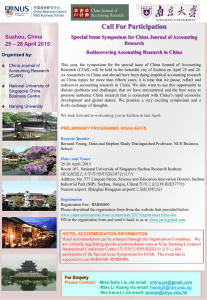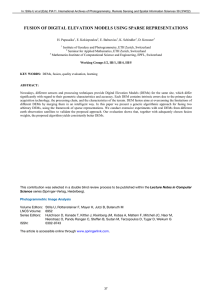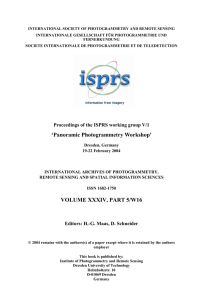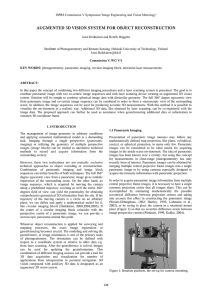Natalia Kozlova
advertisement
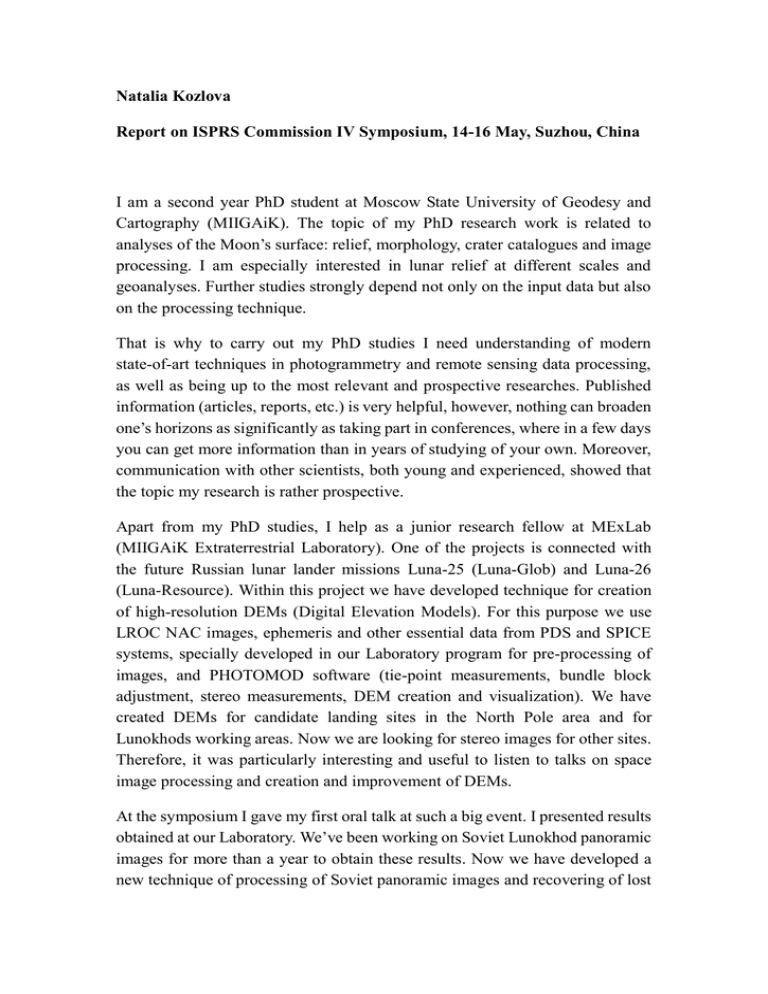
Natalia Kozlova Report on ISPRS Commission IV Symposium, 14-16 May, Suzhou, China I am a second year PhD student at Moscow State University of Geodesy and Cartography (MIIGAiK). The topic of my PhD research work is related to analyses of the Moon’s surface: relief, morphology, crater catalogues and image processing. I am especially interested in lunar relief at different scales and geoanalyses. Further studies strongly depend not only on the input data but also on the processing technique. That is why to carry out my PhD studies I need understanding of modern state-of-art techniques in photogrammetry and remote sensing data processing, as well as being up to the most relevant and prospective researches. Published information (articles, reports, etc.) is very helpful, however, nothing can broaden one’s horizons as significantly as taking part in conferences, where in a few days you can get more information than in years of studying of your own. Moreover, communication with other scientists, both young and experienced, showed that the topic my research is rather prospective. Apart from my PhD studies, I help as a junior research fellow at MExLab (MIIGAiK Extraterrestrial Laboratory). One of the projects is connected with the future Russian lunar lander missions Luna-25 (Luna-Glob) and Luna-26 (Luna-Resource). Within this project we have developed technique for creation of high-resolution DEMs (Digital Elevation Models). For this purpose we use LROC NAC images, ephemeris and other essential data from PDS and SPICE systems, specially developed in our Laboratory program for pre-processing of images, and PHOTOMOD software (tie-point measurements, bundle block adjustment, stereo measurements, DEM creation and visualization). We have created DEMs for candidate landing sites in the North Pole area and for Lunokhods working areas. Now we are looking for stereo images for other sites. Therefore, it was particularly interesting and useful to listen to talks on space image processing and creation and improvement of DEMs. At the symposium I gave my first oral talk at such a big event. I presented results obtained at our Laboratory. We’ve been working on Soviet Lunokhod panoramic images for more than a year to obtain these results. Now we have developed a new technique of processing of Soviet panoramic images and recovering of lost information about their exterior orientation. Our laboratory is new and we do not have many contacts and partners yet. Therefore, it is very important for us to show our techniques and results to experts in photogrammetry and remote sensing. It was great experience and I am very happy that it was at the Symposium. Everybody at the conference was so friendly that I felt very calm and confident and was not half as nervous as I expected. It is very important that our work was approved. It was very nice that after the talk a lot of people, especially VIP guests and invited speakers, came up to me. I was glad that my talk attracted attention. It was very interesting and useful to learn more about Chinese lunar missions. There are very few publications on these missions and the results. However, the results are very impressive. I was particularly interested in Yutu rover, its imaging system and panoramic image processing. As I work with Soviet Lunokhod panoramas it was very useful to know more about how technologies have changed since then and what methods are used to process surface images now. There were a lot of other interesting talks. For example, I was surprised that photogrammetry can be used even in Biology and indoor modeling has become so essential for our lives. Travelling always opens your mind to new information, so it is much more effective to study at different places and going out to participate in conferences always has many advantages. However, it is usually too expensive for students. That is why such travel grants is the only way for us to see the world of real science, obtain useful acquaintances, find new friends and topics for work. It also helps to develop collaboration between scientists from different countries, providing opportunity to compare results and exchange opinions on existing problems, methods and software. Moreover, at such conferences you can find a person who is interested in results of your work and can use them for his own studies, or vice-versa, can provide you new data for research. The atmosphere at the Symposium was pleasant and nice, everything was very well organized and thought through so we had no problems with accommodation and could fully enjoy the conference. It is great that meals were included. It gave us more time to communicate informally, get to know each other better and discuss talks. I have never been to China before and it was very interesting to get close to eastern way of life, to visit all these beautiful gardens, see ancient pagodas, small streets, channels and houses of Suzhou and modern skyscrapers of Shanghai. To conclude, it is of great importance for our Laboratory that our work was presented to the scientific society at the Symposium and it opens new opportunities for scientific cooperation with other universities. The paper published in ISPRS Archives and an oral presentation at such a big and prestigious conference increase my index at my post-graduate studies at University. I am very grateful for the opportunity and I hope next year to participate in the Symposium again.

